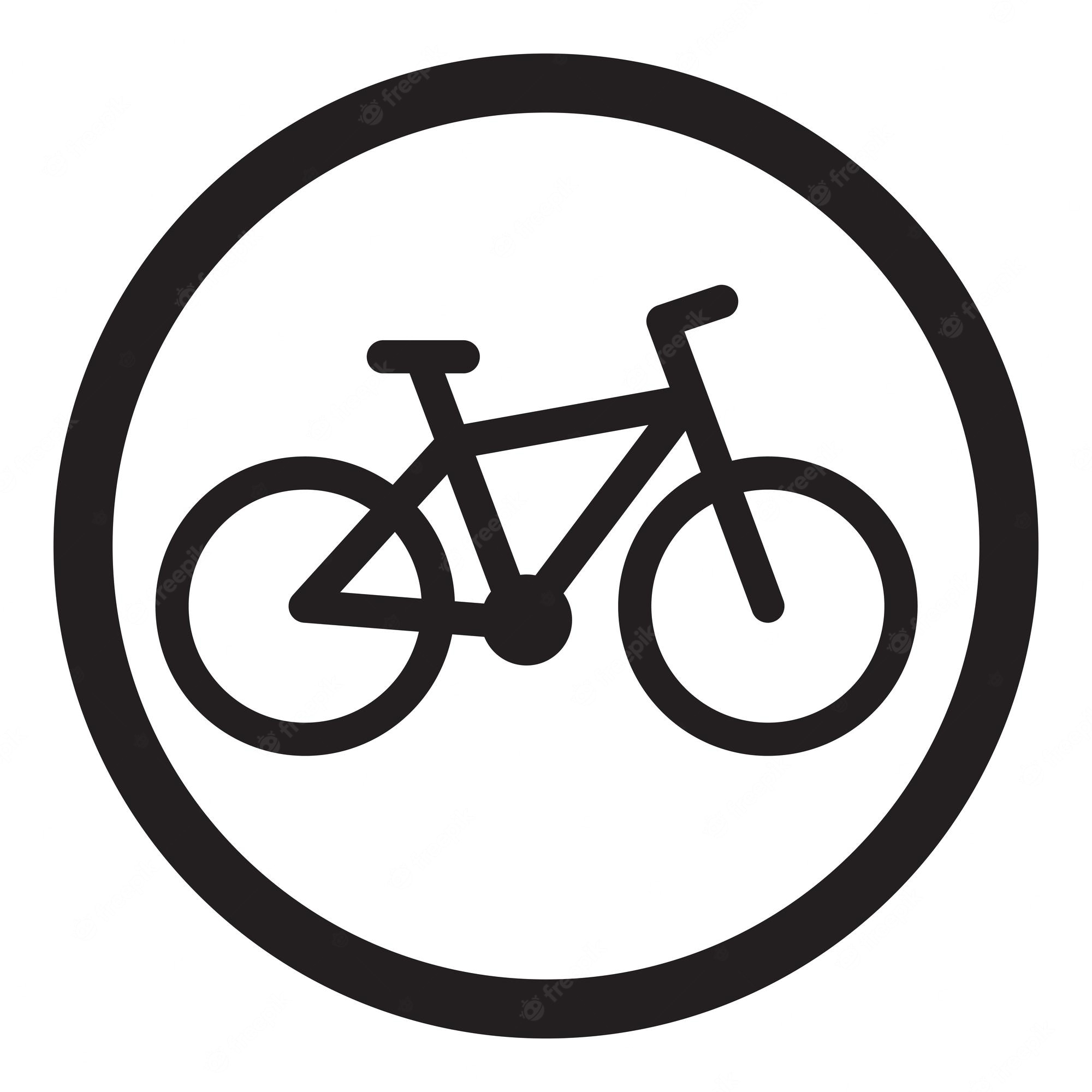Today I did my first 20 mile (33km) ride on my hardtail XC bike. I learned how to ride a bike about 1.5 months ago, but I’ve been riding pretty consistently since I learned. I ride exclusively in the city, it’s a very walkable city, but the paths aren’t always the best. I did 33km in 2 hours 53 minutes, not including breaks for water or to eat.
I see people saying that 10MP/H (16KM/H) average is a good average to shoot for, but i can’t even get my average above 7.1MPH (11.5KM/H), even on shorter rides. What am I doing wrong here? How are people going so freaking fast on bikes in cities?
Don’t worry about speed. Speed is a practically worthless metric, especially when you’re starting out.
Your focus should be on developing a sustainable cadence: the frequency of your pedal strokes, and the pressure you exert on the pedals. It’s a balancing act. For a given output, the faster you pedal, the less pressure you need to put on the pedals. Speed up or slow down from your ideal cadence, and you just wear yourself out without improving your speed.
I looked to maintain about 65-75 strokes per minute, and not pushing so hard that my thighs would start to burn. Some people prefer slower and harder; some prefer faster and lighter.
The purpose of shifting is to maintain consistent stroke rate and pedal pressure. Speed is incidental: if your cadence is good, whatever speed you get will also be good. That might be 7mph; it might be 17mph. It might be barely above a walking speed while you climb a steep hill in low gear, or 40+mph downhill.
Ignore your speed. Stick with your sustainable cadence. Downshift (and let the bike slow down) if the pedals are too hard. Upshift (and let the bike speed up) if they are too soft.
City riding is slow.
Pump up your tyres.
Go at whatever speed you like.
Will I get a dented rim or a popped tire if I go down stairs at 50-55PSI? The tire is rated to 65.
You learned how to ride a bike a month and a half ago and you’re already talking about going down stairs? I’m not gonna tell you you’re wrong, but I will say that’s pretty damn adventurous!
I’d suggest getting some more experience so you develop some feel for how different tire pressures work (and more importantly, how shifting your weight forwards and backwards works and other bike-control stuff like that) before trying that. But then again, I’ve been riding since I was a kid and I still shy away from stairs so what do I know?
I’ve gone down stairs, but only the kind that are sort of long (as in three stairs, but the space between the stairs is long as opposed to the three stairs being one after the other. It is pretty scary as I have trouble getting over the back wheel (maybe my saddle is too wide?The reviews I read about the bike said the saddle that came with it was terrible, so I’ve been riding on this saddle).

Looks like the seatpost may be backwards, so you might be sitting closer to the handlebars and bottom bracket than you should be. Can you give us a picture from another angle, from behind and lower?
I put the bike together myself out of the box, so that’s certainly possible.

Yeah, you should remove the saddle and turn that thing around, then re-attach the saddle pretty much level. I would not want to spend more than half an hour sitting on that setup. You may be able to simply loosen the nut and turn the part that is currently clamping the seat post 180 degrees to the front, no need to remove the saddle from the clamp.
Rule of thumb is this: If you turn the pedals to a horizontal position (let’s say the left one facing forward), the part of the leg just below your kneecap should be pretty much perpendicular to the pedal’s axis. If your saddle is too far forward or backward, you will not be able to pedal efficiently. It’s probably part of the reason why you cannot go very fast since you’re unable to use the leverage of the crank arms that way.
About saddle height: If your saddle height is correct, you can turn one pedal to its lowest point and place your heel on it. If your leg is then just slightly bent (shouldn’t be straight, but not a significant angle either), you’re probably pretty spot on.
As an avid cyclist, I can say that those are just pretty good rules of thumb. With my experience as a rider, pretty minor adjustments make a big difference and I tweak new bikes or parts as I go based on how it feels. I also learned from bad experience (knee and achilles heel problems from too high a saddle, for instance), so what I wrote above is a good starting point for you until you start getting a feel for such things with more kilometers under your belt. Welcome to the club, champ!
As long as you deweight the back wheel as you go down the stairs you’ll be fine.
What does that even mean?
When you go down stairs you want your weight backwards over the rear wheel which is gonna add more weight to the back wheel. To “deweight” the rear wheel you’d need to lean forward which is only going to end in pain going down a stair set.
edit are you referring to going up curbs as opposed to downstairs? In which case this would be relevant?
I’m also struggling to understand 😅
Don’t listen to him, he’s giving you a recipe for going over your front handlebars hard.
Correct. You want most of your weight over the front wheel because if you’re over the back wheel you bounce harder and you’ll get a lovely snake bite pinch flat for your troubles. You aren’t going to be completely over the front wheel just a little bit to get the back wheel lighter since you have no rear suspension.
I ride enduro on a hardtail mtb. I used to get the dreaded snake bites until i learned how to ride stairsets.
ERM what? “Most of your weight over the front wheel” I’m sorry but this is just blatently wrong and goes against the physics of what is happening. If most of your weight is over the front wheel you are going over the bars.
Then you say you aren’t going to be completely over the front wheel, just a little. But you just said most of your weight.
What you are saying makes absolutely no sense and isn’t even consistent across your message.
This is bad advice that could get someone hurt man. Not cool.
I ride every day and down a set of stairs. If he wants more in depth info he can go watch a video.
What i’m saying makes sense if you’ve ridden any features that require you to deweight your back wheel. Most of your weight will be over the front wheel but you yourself will be mostly center on the bike. This isn’t rocket science. If he wants to gap the stairs (doubtful since he said he learned to ride a month ago) then i’d say lean back in preperation for a bunny hop but since he isn’t then the easiest thing he can do to not fuck up his bike is to lean forward a tiny bit as he descends. He’ll try it a few times and figure out where his balance point is since it’s different for everyone. until he figures it out he’ll probably pop a few tires.
Biking over features can get you hurt, if you only take advice from one internet stranger you’re asking for trouble anyways.
I’ve been thinking about your post as I was biking to work this morning. I see others have talked to you about tires in the meantime but for on road riding I can really recommend pretty slick tires even on a mountain bike they will make a huge difference in resistance, especially if you inflate them as hard as they can take(look on the side of te tire for something that says inflate to xx psi). Hard smooth tires run nearly as good as racing tubes.
Another thing I was thinking about is saddle height. Most new cyclists put their saddle way too low, which is understandable as you want to be able to put your foot on the ground when you lose balance. However that is not the best thing for transferring muscle power to your pedals. I found that for good force you want to have your saddle so high that when you sit on it and you put a foot on the pedal at it’s lowest point, with your foot parallel to the ground, your leg is fully stretched.
This does mean that to put a foot on the ground you have to keep your other foot on the pedal and slide forward off the saddle. The posture of your leg for pedalling will be way better getting more power to the bike and reducing stress on the knees.
Make sure your foot rests on the pedal with the front part, like you can see bike racers do. That allows for more muscles to work on pushing than when the pedal is under the middle of the foot.
Beware that raising the saddle does change the front-back balance a bit as your weight sits higher.
I read you bike down stairs, if it is only one or two steps that is not going to change much but if it’s a full flight of stairs that might be a problem.
Frankly I’m 52 years old and have been riding bikes since I was 3 and I have not ridden off more than a couple of steps at a time for the last four decades, it’s just not something I wish to inflict on my bike, nor on myself. Hopping down half a meter while at speed is no problem, but really riding of flights of stairs? You are a braver man than me.
I agree on the saddle height. It’s important to have it high enough so you can push efficiently.
About the tires, I don’t agree 100%. Higher pressure might give you slightly better rolling resistance but will give you way more vibrations and shocks which makes you tired in the long run. I can poste a page of a book explaining this better if you like. In general it’s important to have smooth tires (usually high thread cound and good quality rubber) for a low rolling resistance.
Hmm I hadn’t thought about the shocks on hard tires bbeing so tiring though that does make sense. It does make a serious difference in resistance though, main downside for me of hard tires is less grip, both because of a smaller contact area with the ground and because an uneven roard makes you bounce more. I suppose it’s a matter of adapting to circumstances. I do lower pressure for soft or smippery roads a tiny bit sometimes.
It’s all in this book: https://www.renehersecycles.com/shop/print/books/the-all-road-bike-revolution/
Thanks!
Reading the thread and your responses, I thought it might be useful for you to try some other bike types, like a trekking bike and a racing bike. Because you are pretty new to biking in general, this might expand your context window efficiently and effectively. I love the feel of ‘fast’ bikes because your muscle power gets you so much, giving me a little bit of that same feeling when windsurfing or sailing. I also like the versatility and confidence a mountain bike gives you, but it’s like it eats your speed when you’re not using it for rougher terrain. Had the same experience when pushing my grandma through the forest in an offroad wheelchair, getting back on the tarmac was actually _ worse_
1.5 months is also basically just starting out, no matter if you are fit or talented, it takes some km/hours to ‘attune’ or adapt or ‘get the feel’. Same with saddle discomfort/monkey butt. Your butt and the saddle take a lot of time to get used to each other, and more time will increase comfort. Your speed will improve with just time, I’m sure. Can we have a pick of your bike?? Have fun pedaling!
The MTB gives me more confidence that I won’t break something if I go down a curb too hard or somehow make a wrong move and go into a pothole.
My butt does hurt a bit, mostly because my underwear rides up uncomfortably as I ride, I occasionally have to stop and fix it 😅
Here’s a pic of my bike :)

You can go fast in that bike but it’s not really built for it. If you desire speed there are usually good deals on older street bikes. My 40 yr old miyata 910 weighs half of your MTB and that makes a big difference in acceleration and speed. I commuted with this bike for almost 20 years and got my average up to 50 kph. Would pass traffic between lights, it felt great being faster than cars.
I’m sorry but the average speed across all stages in the Tour de France is around 41km/h there is no way that you could average 50kp/h unless your route was entirely downhill. Even then if it was a commute you’d have to return up that hill which would then normalise your average.
Cities do lower average speed significantly, but 30k in 3 hours is indeed very slow.
Hard to diagnose from afar, but I’d say take a look at shifting technique and pedaling cadence. It’s actually not so easy at first to know when to shift and which gear is right (until it becomes second nature and you never think about it again.)
Pedaling speed should be viewed as somewhat of a constant (try to aim for 60rpm at first, maybe?), and your job is to pick the gear that feels comfortable for that cadence in a given situation.
I’ll try to focus more on my shifting! Thanks for the advice :)
One question - for hills, for example, which derailleur has more of an effect? For example, on a big hill, am I better off being in 1st gear on the chainring and 3rd out of 8 gears on the cassette, or 2nd gear on the chainring and 1st gear on the cassette? Which do people usually use?
I wouldn’t think of it that way. Just try to avoid twisting the chain too much. If your chain is all the way to the left in the front, keep it on the left half in the back. If you feel like moving the rear to the right half, just shift the front gear to the middle instead. Beyond that, just do whatever feels right.
I usually set the front to the ballpark I expect to be in for the foreseeable future, and fine tune in the rear as I go. It’s usually harder to shift the front while pedaling hard uphill in my experience.
I usually just ride the bike as if it was a 1x, never shifting off the second chainring, too much to think about using both, unless it would make climbing easier.
That is a big hint to why you feel you’re going slow. On flat or downhill ground I would usually be on the very hardest gear in order to be able to keep up with the wheels. If you’re constantly in a medium gear you’ll not reach very high speeds on easy terrain.
But maybe you shouldn’t worry about that right now. You’re pretty new to this, so you don’t need to optimize for speed. Just go at a pace comfortable for you, while you get used to this new way of moving. Perhaps it’s even a good thing to be going slower right now, that way there’s more time to react, and less injury if you have an accident.




